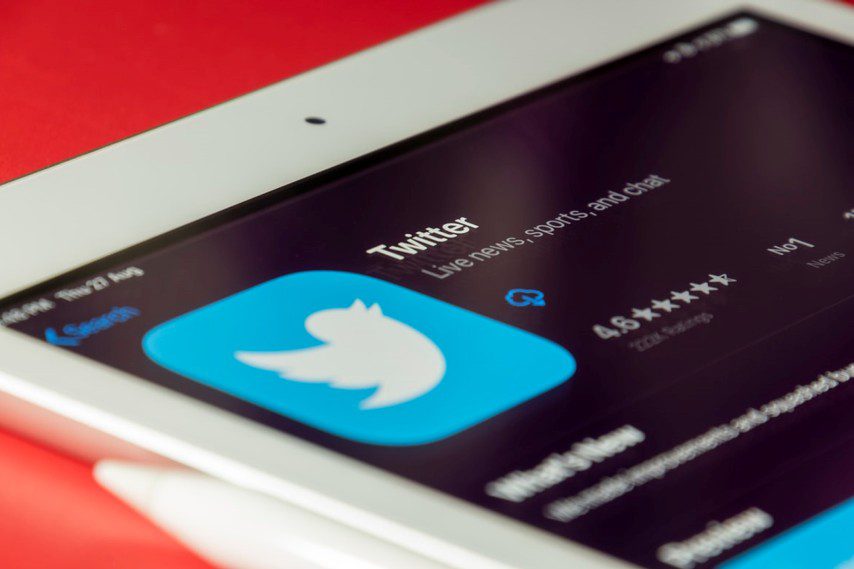
Source: Unsplash
It’s been over 16 years since Twitter founder Jack Dorsey submitted the social platform’s inaugural tweet. A lot has changed since then, which we’ll explore in more detail throughout this article that looks back at Twitter’s seismic impact on modern life.
The latest major development in the Twitter story inspired this article, as Elon Musk aims to purchase Twitter and make the company private. In many cases, the biggest tech stocks go from being a private limited company to a public concern, welcoming external shareholders that provide much-needed additional capital for the business in exchange for equity.
Twitter has been a public company since November 2013 when it raised an initial $1.8bn and the market valued the company at $31bn. The biggest equities almost always have the largest presence in the stock markets. For those reading this and wondering how to invest in stocks for the first time, it’s important to decide whether to put your money in established equities like Twitter and develop wealth over the long term or trade the short-term price movements of equities with high market capitalizations to generate multiple short, sharp profits.
The Twitter concept
The Twitter “name” is said to have been coined by tech entrepreneur Noah Glass, who initially recommended an abbreviated version of “Twttr”. Glass has been credited with designing and building some of the key features of the Twitter platform, resulting in reporter Nicholas Carlson describing Glass as a “forgotten founder” of Twitter.
First test for real-time social posting
One of the first cases of Twitter’s use occurred in the same year of its launch in early August. The state of California experienced a 4.4-Richter earthquake, with individual users tweeting the action, demonstrating the potential for reporting live events with ease.
The following year, Twitter had a significant leg up from South by Southwest Interactive (SXSW), which helped to boost its active user base. A few months later, Twitter was valued at $20m and closed five funding rounds worth $1m apiece.
The role of Jack Dorsey
Jack Dorsey was the platform’s CEO during this time of substantial growth. Dorsey concluded a further two funding rounds and oversaw the implementation of one of the biggest features on the Twitter platform: hashtags. In the fall of 2008, Dorsey stepped down as chief executive, paving the way for Evan Williams to take charge. He would later return as interim and permanent CEO, but today he is more focused on driving forward his alternative platform, Block.
Rapid growth and celebrity endorsements
As Twitter continued to raise funds and expand its global user base, the platform benefitted from a string of celebrity endorsements. All helped to enhance Twitter’s exposure and appeal to consumers. Before the turn of the 2010s, Twitter began enabling online advertising on its platform as “promoted tweets” to targeted demographics.
Twitter goes public
After six years of unprecedented growth, the time was right for Twitter to go public. In October 2013, the firm announced its intentions to launch on Nasdaq. A month later, Twitter concluded an initial public offering (IPO) and within a matter of weeks, the company ramped up its acquisitions to expand its in-house capabilities. Periscope ensured Twitter could keep pace with live-streamed events on demand, while acquisitions of Gnip, MADBITS, and TellApart were all designed to improve the platform’s “deep learning” and refine the user experience and the effectiveness of its advertising services.
Intelligence and automation redefine the Twitter feed

Source: Unsplash
Intelligence remains the buzzword for the rise of Twitter ever since its IPO. The platform continues to work hard to be responsive and agile, embedding automation and artificial intelligence (AI) to minimize feed clutter. Recommended tweets and advertisements generate better engagement and improve the broader user experience, increasing time spent on-site or within its native apps. The “blue tick” to show credible information sources has proven invaluable, particularly during turbulent times.
Related – Best Social Media Apps
What’s next for Twitter?
Elon Musk remains the highest individual shareholder in Twitter, with a shareholding of 9.2%. That’s because Vanguard Group’s 10.3% stake is owned by a conglomerate rather than an individual investor. However, there is a chance that Musk could assume full control of Twitter’s platform in the coming weeks and months. The visionary entrepreneur made an initial $44bn takeover bid for the social media firm, although the closure of the deal seems a long way off at present.
That’s because Musk is seeking to renegotiate his offer following the revelation that as many as 25% of Twitter users are spam bots. Musk claimed his takeover bid was on hold while he ascertained the genuine percentage of bot accounts. Musk has lobbied Twitter chief executive, Parag Agrawal, to show proof that fewer than 5% of Twitter accounts were fake or spam, as the platform has intimated in the past. When asked about the scale of renegotiation needed if the 25% figure proves accurate, Musk said he would only be prepared to pay 25% less than his original offer.
Although a lower bid may not be warmly welcomed by Twitter’s board, it could be forced to seriously consider any revised approach from Musk given the market headwinds currently experienced by many leading tech stocks.
 Sections of this topic
Sections of this topic















